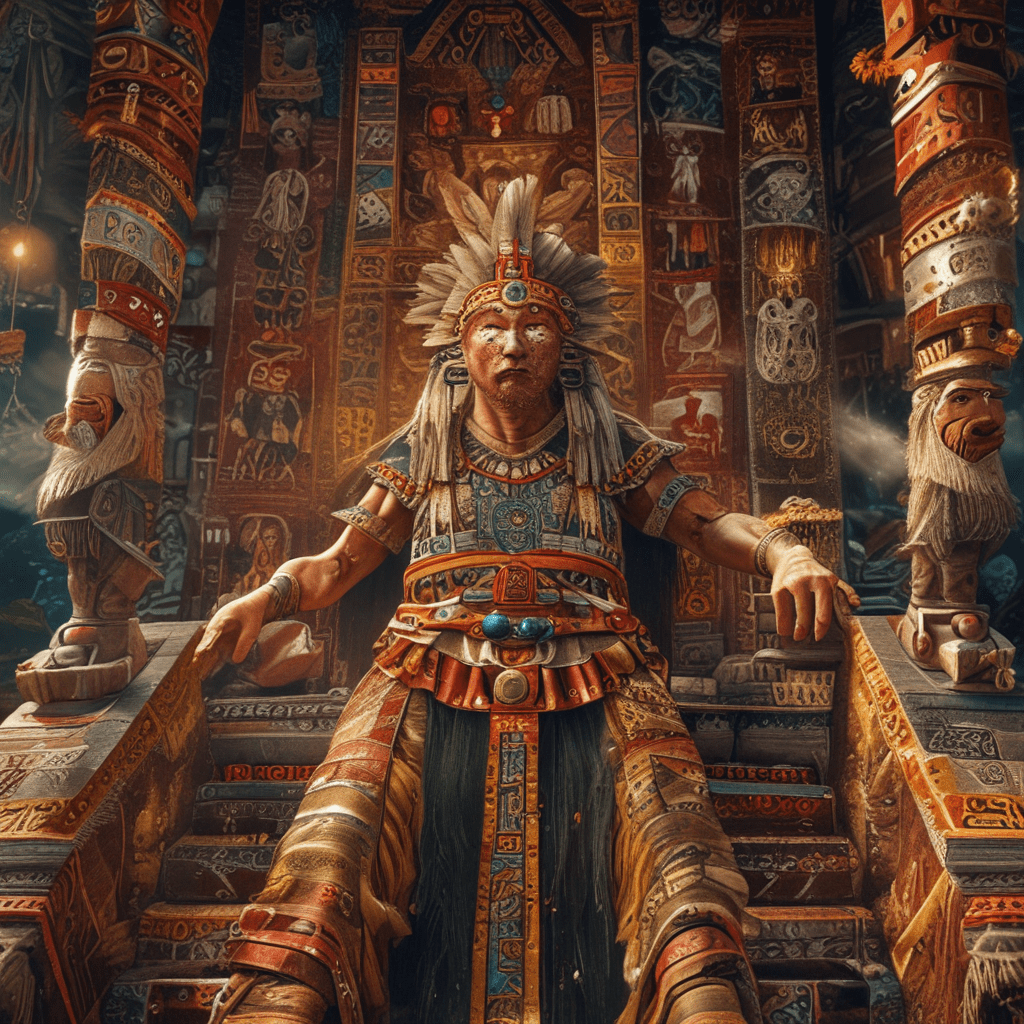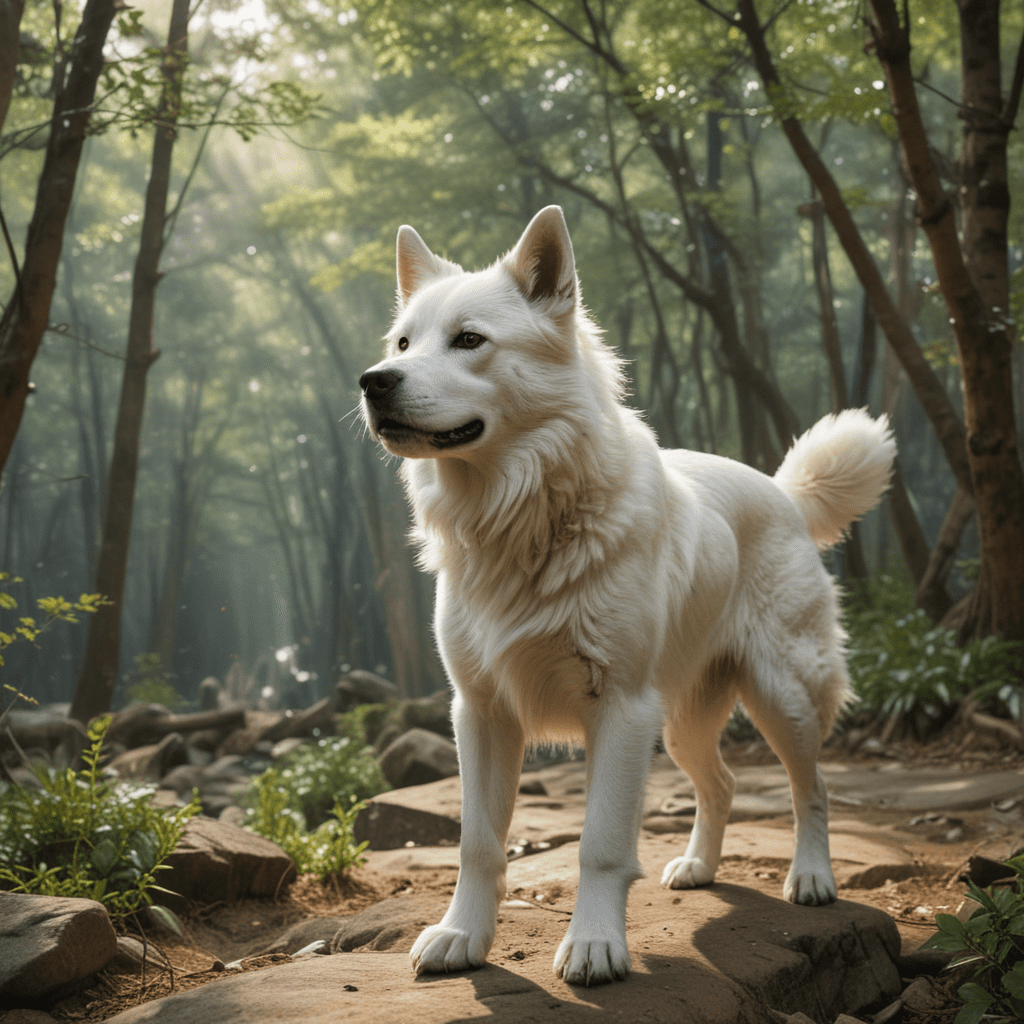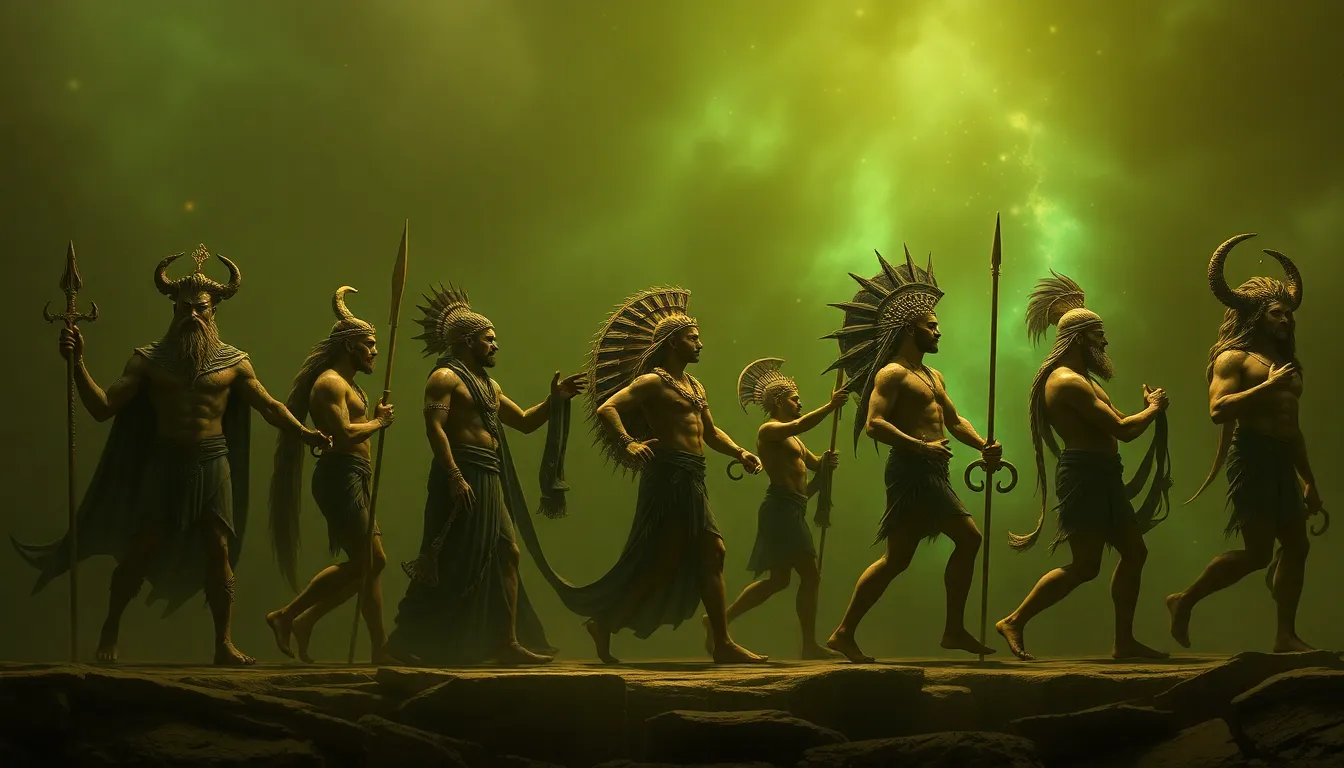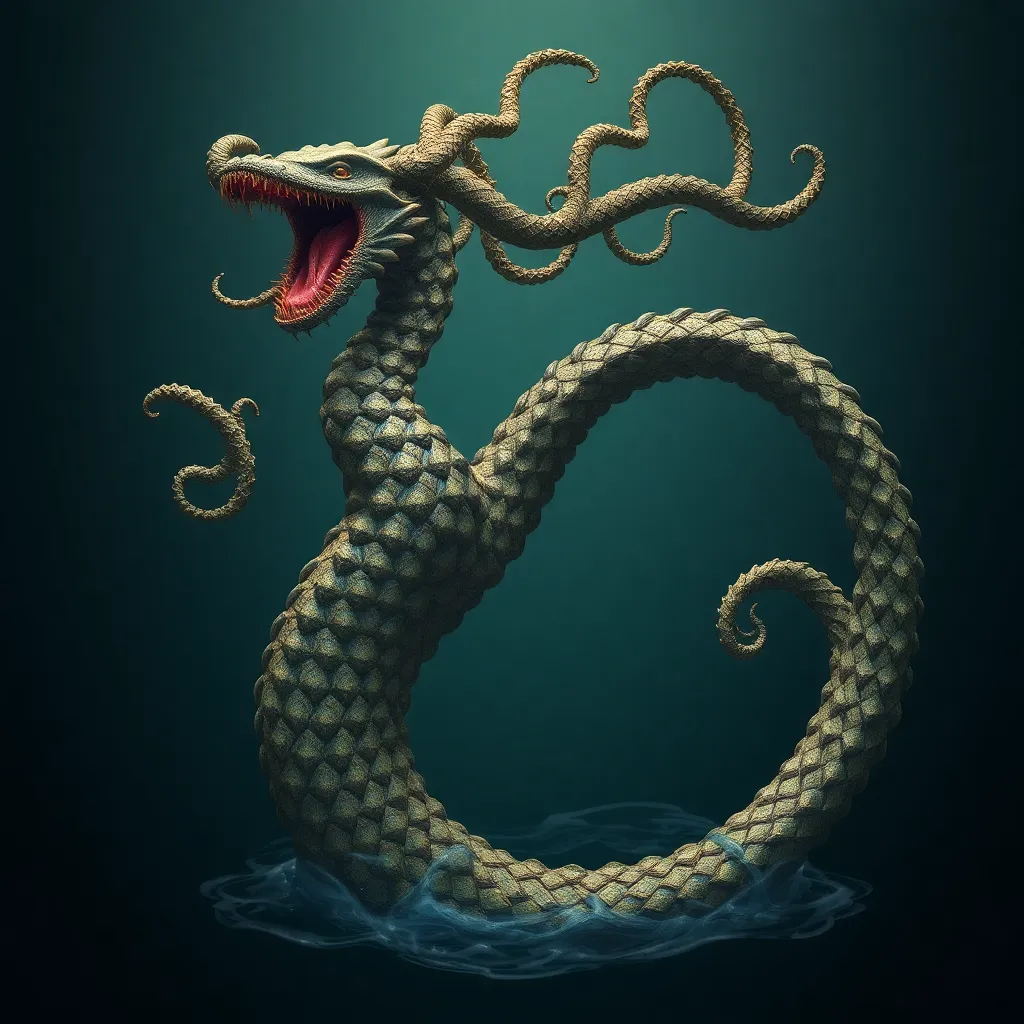Incan Mythical Textiles: Weaving Stories of Gods and Heroes
The Incan Empire, a civilization that flourished in the Andes Mountains of South America, left behind a legacy of stunning artistry and intricate storytelling through their textiles. Incan textiles weren’t just clothing; they were a vibrant tapestry of myths, legends, and beliefs woven into every thread. These textiles, passed down through generations, offer a window into the Incan worldview, revealing a complex web of deities, heroes, and cosmic forces that shaped their lives.
The Andean Cosmos: A World of Layers and Interconnections
The Incan people saw the universe as a layered and interconnected system, where the earthly realm was influenced by the heavenly and the underworld. Their understanding of the cosmos was reflected in their textiles, where intricate designs and symbols represented celestial bodies, natural elements, and spiritual forces. The Andean cosmos, as depicted in Incan art, was a dynamic and ever-changing space, where the actions of humans and gods intertwined to shape their destinies.
At the center of the Incan worldview was the concept of Pachakuti, which means "transformation" or "turning point." They believed that the cosmos was in a constant state of change, and these changes were influenced by the actions of humans and gods alike. Their textiles often incorporated imagery related to Pachakuti, showcasing the cyclical nature of life and the interconnectedness of all beings.
The Divine Thread: Gods, Spirits, and the Origins of Textiles
In Incan mythology, the creation of textiles was attributed to Viracocha, the supreme creator god. According to their legends, Viracocha gave humans the ability to spin and weave, gifting them with the knowledge to transform raw materials into intricate fabrics. This divine origin story underscores the importance of textiles in Incan society, connecting them to the very essence of creation and the divine will.
Textiles weren’t just seen as utilitarian objects; they were imbued with spiritual significance, serving as a conduit between the earthly and the divine. The Incas believed that every thread, every knot, and every design held symbolic meaning, reflecting the interconnectedness of the cosmos.
Mythical Beings in Textile Art: From Viracocha to Pachamama
Incan textiles were a canvas for portraying the stories of their deities and mythical beings. Viracocha, the creator god, was often depicted in textiles, his image serving as a reminder of his divine power and influence. Pachamama, the earth goddess, was another prominent figure in Incan mythology, and her image, often depicted as a nurturing mother figure, symbolized the bounty of the earth and its importance to human life.
Other mythical beings, such as Apu, the mountain spirits, and Supay, the god of the underworld, also found their way into Incan textile designs, reflecting the diverse and complex pantheon of deities that shaped the Incan worldview.
Weaving the Stories of Heroes: Valiant Deeds and Divine Intervention
In addition to deities, Incan textiles often depicted the stories of their heroes and legendary figures. These tales often highlighted acts of bravery, cunning, and divine intervention, showcasing the values and beliefs of the Incan people.
One such story that was often woven into textiles was the tale of Manco Capac, the legendary founder of the Incan Empire. Manco Capac was said to have emerged from a sacred lake, bringing with him the tools and knowledge needed to establish civilization. His story, and other heroic tales, served as inspirational narratives, reminding the Incan people of their heritage and the importance of courage, wisdom, and divine guidance.
The Language of Symbols: Interpreting the Motifs and Designs
The beauty of Incan textiles lies not just in their vibrant colors and delicate craftsmanship, but in the intricate language of symbols woven into their designs. Each motif, each pattern, held a specific meaning, conveying stories, beliefs, and cultural knowledge passed down through generations. To truly appreciate Incan textiles, it's crucial to understand the symbolism behind their designs.
For example, the khipu, a system of knotted cords, served as a complex form of record-keeping, encoding information about everything from population counts to agricultural yields. Each knot, its color, and its position on the cord carried a specific meaning, allowing the Incas to communicate complex information without the use of written language.
Textile designs also often incorporated imagery related to nature, with elements like the sun, moon, stars, mountains, and animals appearing frequently. These representations highlighted the strong connection the Incas had with the natural world and the importance they placed on respect and harmony with the environment.
The Chakana, a cross-shaped design often found in Incan textiles, is a powerful symbol representing the connection between the three realms of the Incan cosmos: the upper world (Hanan Pacha), the earthly realm (Kay Pacha), and the underworld (Ukhu Pacha). The Chakana symbolized balance, harmony, and the spiritual journey of the soul.
The Role of Shamans and Weavers: Guardians of Sacred Knowledge
In Incan society, the roles of shaman and weaver were deeply intertwined, both considered guardians of sacred knowledge and traditions. Shamans, as spiritual leaders, were responsible for interpreting the will of the gods and guiding their people. Weavers, on the other hand, were seen as artists who transformed threads into powerful symbols, carrying the wisdom and stories of their ancestors.
The close relationship between shamans and weavers is evident in the creation of Cumbi, a type of ceremonial textile often used in religious ceremonies. Cumbi were meticulously crafted with intricate designs that reflected the shaman's understanding of the cosmos, representing deities, spirits, and important events. Weavers, under the guidance of shamans, would create these textiles, transforming them into sacred objects that connected the human realm with the divine.
Shamans would often use Cumbi during rituals, wearing them as a symbol of their spiritual authority and connection to the divine. These textiles served as a bridge between the physical and spiritual worlds, empowering shamans to connect with the supernatural and guide their communities.
Textiles as Ritual Objects: Connecting the Human and Divine
Textiles played a central role in Incan rituals and ceremonies, serving as powerful tools for connecting with the divine and invoking blessings from the gods.
For example, Tunics, often ornately embroidered with intricate designs, were worn by high priests and nobles during religious ceremonies, signifying their status and connection to the divine. Tapestries, woven with images of deities and mythical creatures, were used as offerings to the gods, seeking their favor and protection.
Textiles were also used in death rituals, with shrouds and burial garments adorned with designs symbolic of the afterlife and the journey of the soul. These textiles served as a means of guiding the deceased through the underworld and ensuring their safe passage.
The Enduring Legacy of Incan Textiles: Preservation and Modern Interpretations
Despite the passage of centuries, Incan textiles continue to inspire awe and wonder. Their intricate designs and vibrant colors offer a timeless glimpse into the rich culture and mythology of the Incan Empire.
Today, museums and historical societies around the world showcase these treasures, preserving them for future generations. In recent years, there has been a renewed interest in Incan textiles, with contemporary artists and designers finding inspiration in their traditional motifs and techniques.
The enduring legacy of Incan textiles lies in their ability to transcend time and cultures. Their stories, woven into every thread, continue to inspire and teach us about the importance of tradition, symbolism, and the power of storytelling.
Exploring the Theories: Origins, Influences, and Cultural Significance
Scholars and researchers continue to study Incan textiles, seeking to unravel their mysteries and deepen our understanding of Incan culture. They delve into the origins of textile production in the Andes, exploring potential influences from neighboring cultures and the evolution of weaving techniques over time.
One key area of research focuses on the impact of the Incan Empire on the spread of textile traditions throughout the Andes. The Incas, as powerful conquerors, brought their own style and techniques to the regions they conquered, leading to a blending of cultures and the emergence of unique regional variations in textile designs.
Another area of study explores the cultural significance of Incan textiles, including their role in social hierarchies, religious practices, and everyday life. By analyzing the materials, techniques, and symbolism of Incan textiles, researchers can gain insights into the beliefs, values, and social structures of this fascinating civilization.
From Threads to Narratives: Unveiling the Secrets of Incan Mythological Textiles
Incan textiles are more than just beautiful objects; they are intricate tapestries of stories, beliefs, and cultural knowledge, interwoven with threads of tradition, symbolism, and the divine. By studying the designs, motifs, and techniques used in Incan textiles, we gain a deeper appreciation for the rich tapestry of Incan culture.
These textiles offer a unique window into the past, allowing us to connect with a civilization that has long since vanished, yet whose legacy continues to inspire and captivate us today.
FAQ
What is the significance of textiles in Incan culture?
Textiles were deeply intertwined with Incan life, representing a blend of practical use, cultural identity, and spiritual connection. They were used for clothing, ceremonies, and record-keeping, showcasing the intricate and complex worldview of the Incan people.
What are some of the most common symbols found in Incan textiles?
Incan textiles often featured motifs like the Chakana (a cross-shaped symbol representing the connection between the three realms of the Incan cosmos), imagery of deities like Viracocha and Pachamama, and animal and plant motifs that reflected the importance of nature in Incan belief systems.
How were Incan textiles passed down through generations?
Knowledge of weaving techniques and designs was passed down orally and through hands-on learning. Weaving communities played a crucial role in preserving traditional patterns and symbolism, ensuring that these stories and traditions were passed on to future generations.
What is the importance of studying Incan textiles today?
Incan textiles provide valuable insight into the culture, belief system, and daily life of this ancient civilization. By studying these intricate woven narratives, we gain a deeper understanding of the Incan worldview and the rich tapestry of their cultural heritage.



